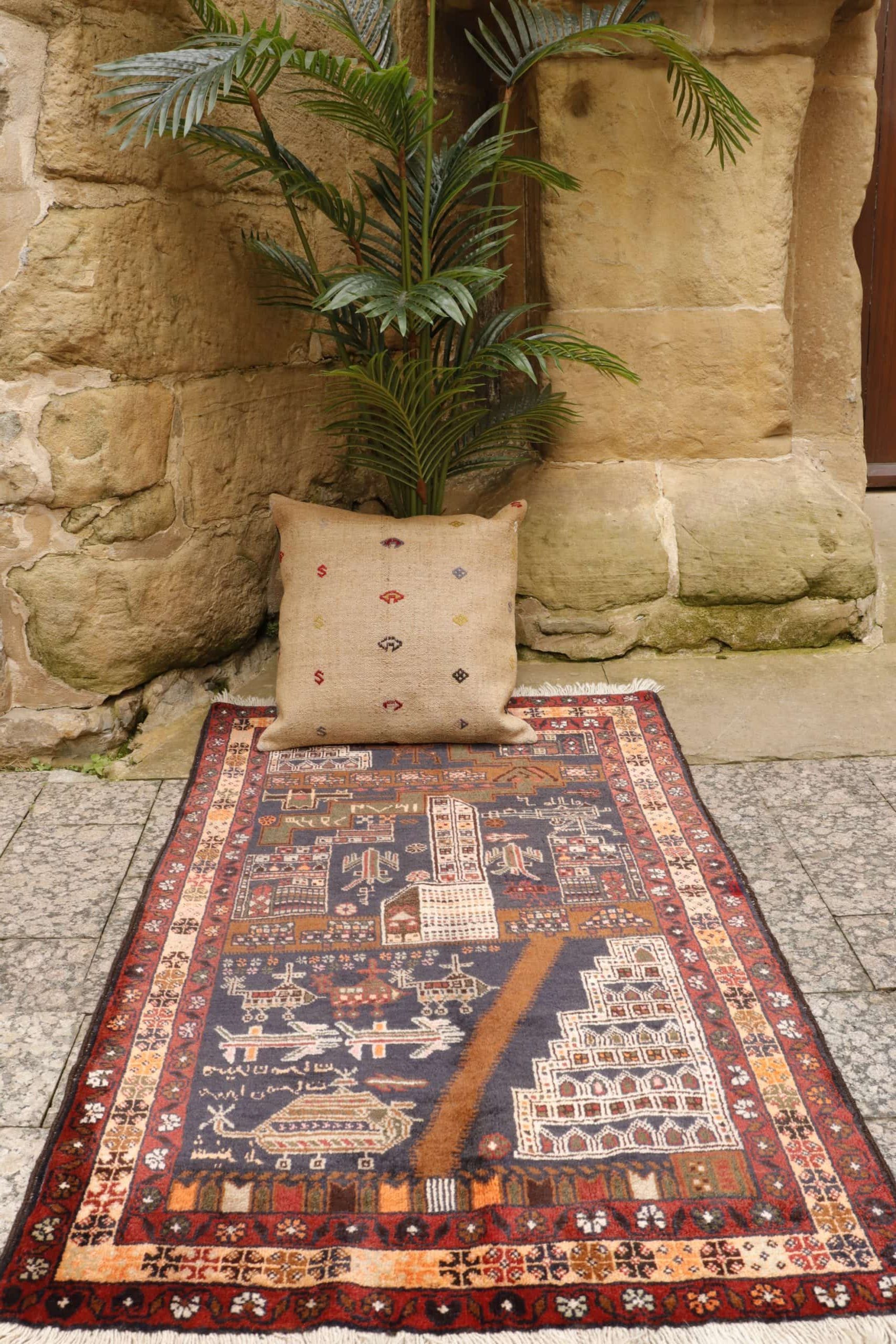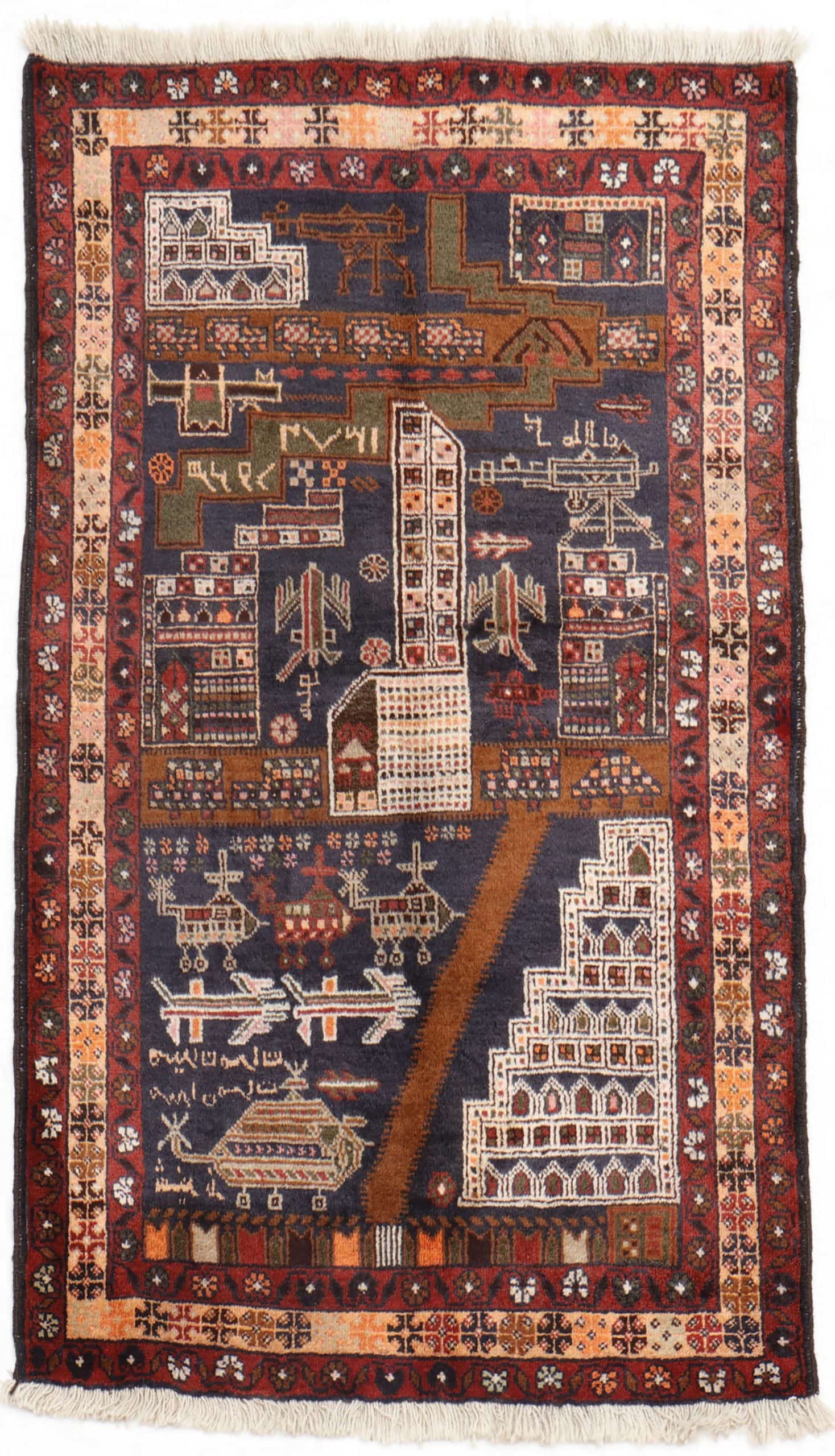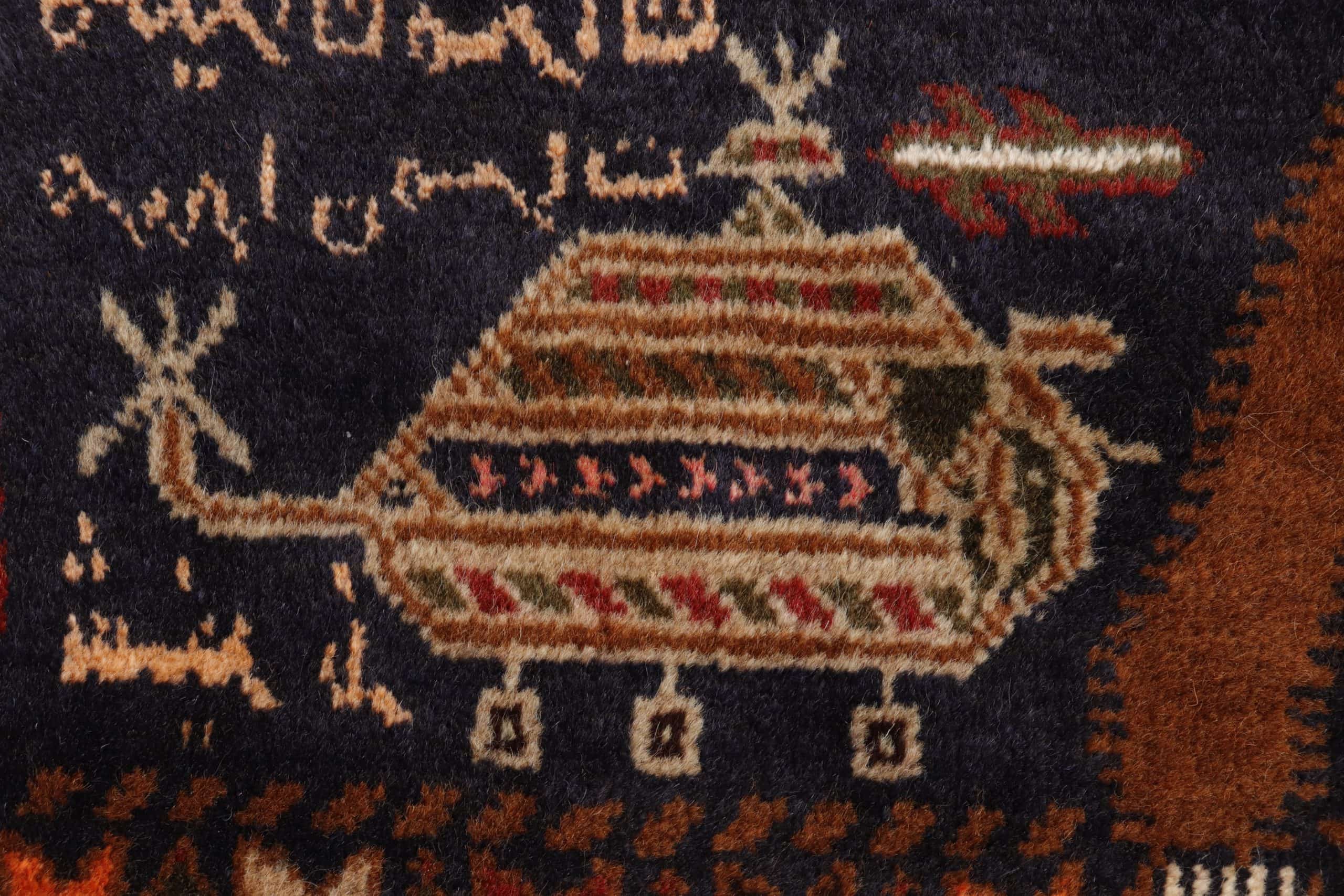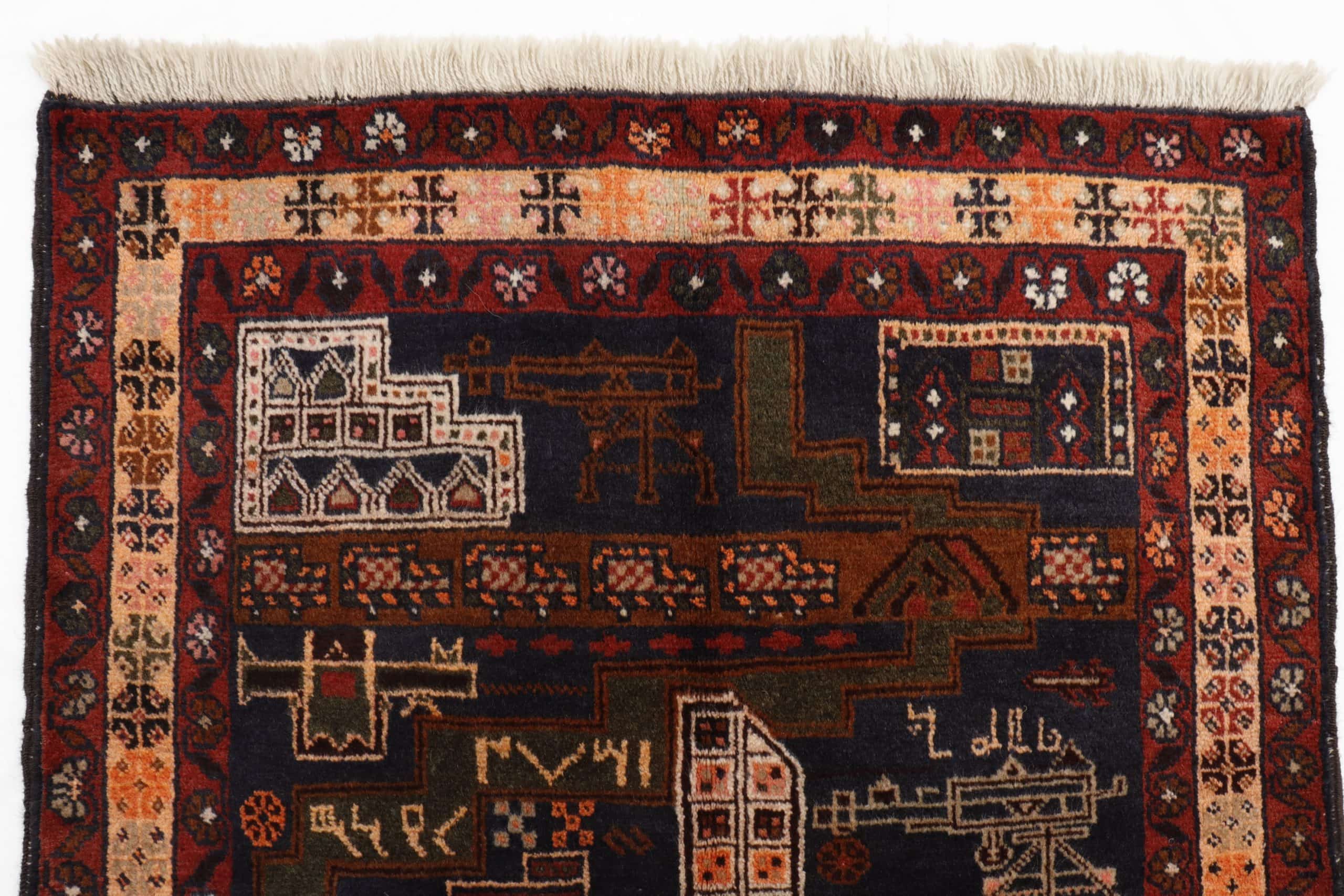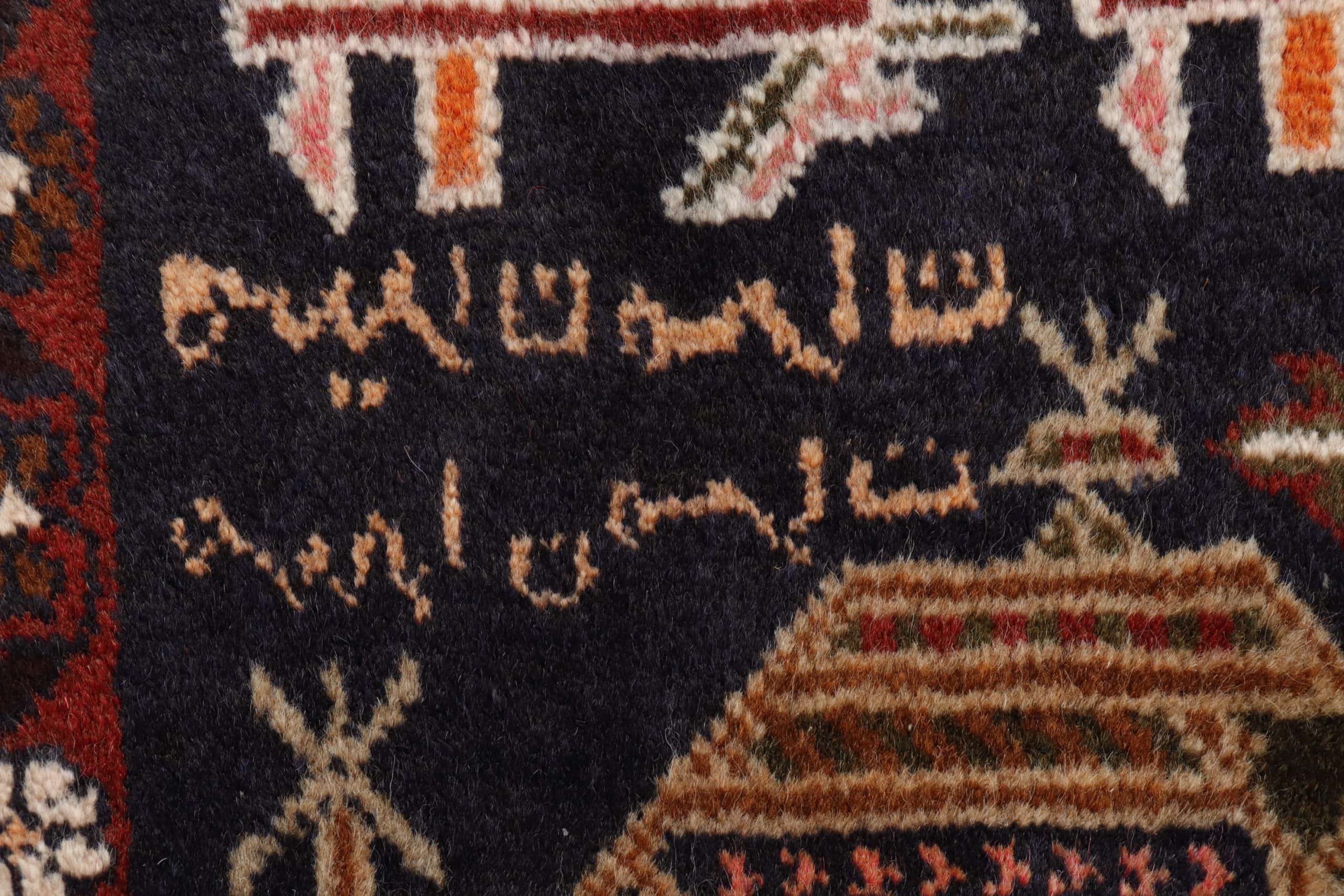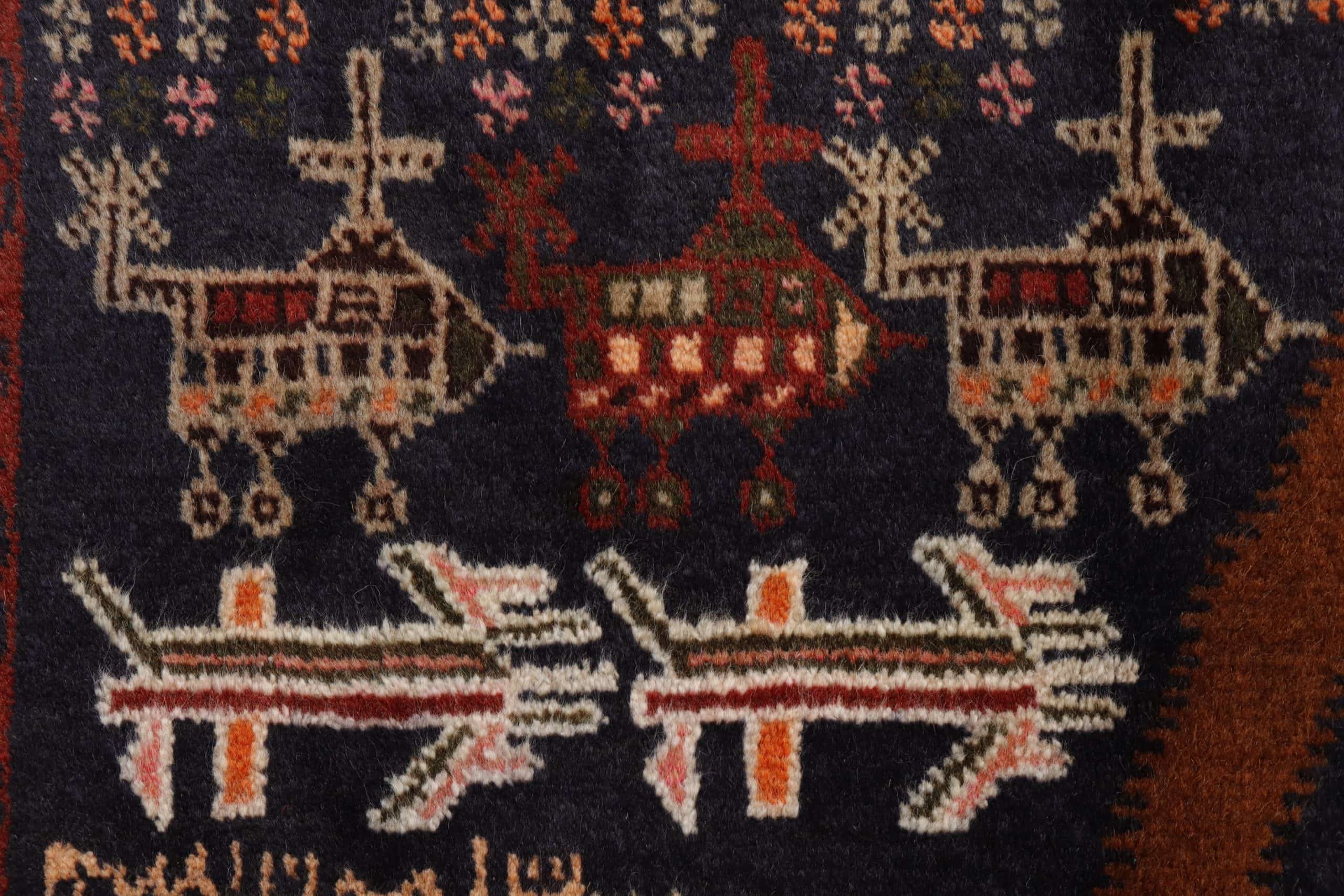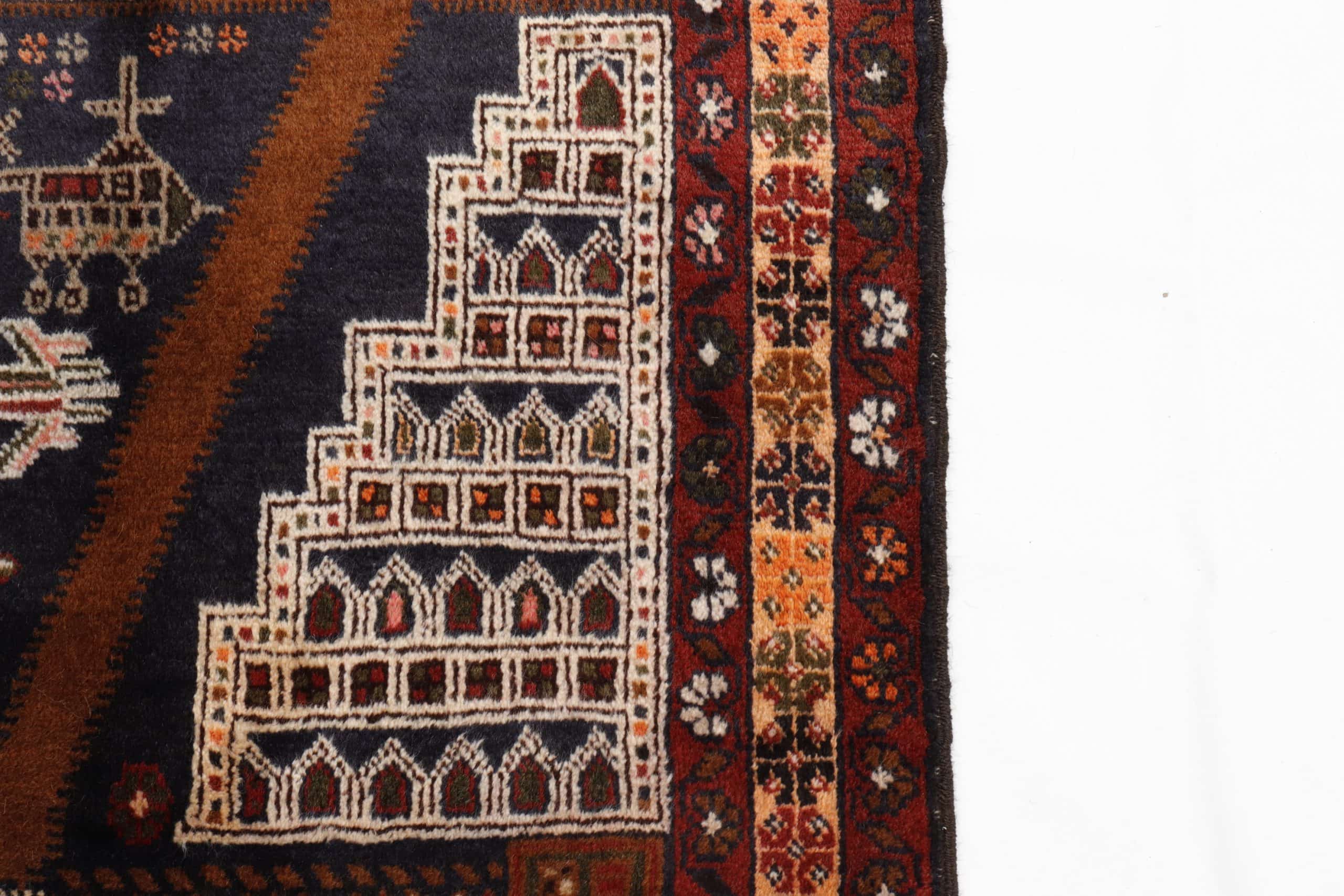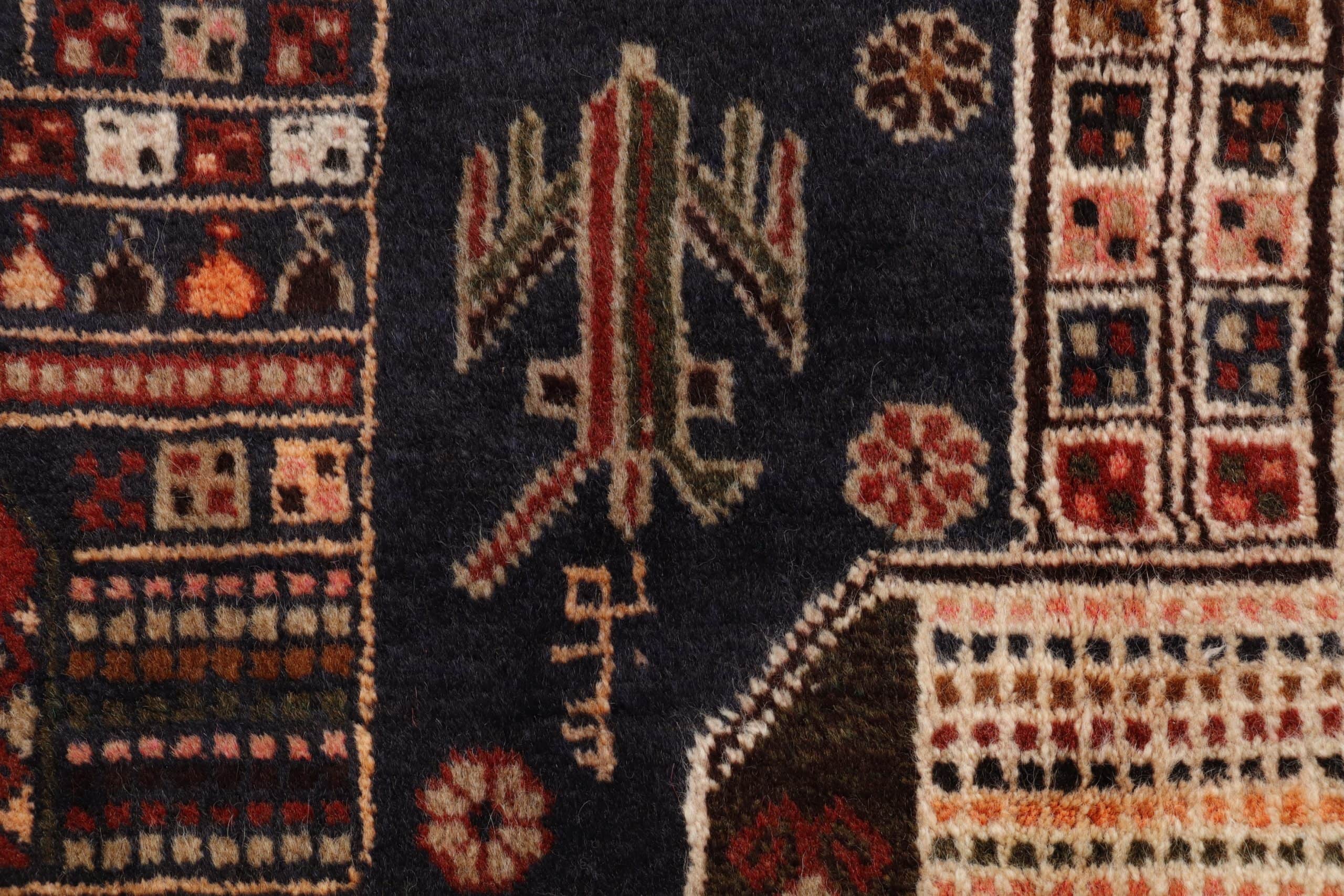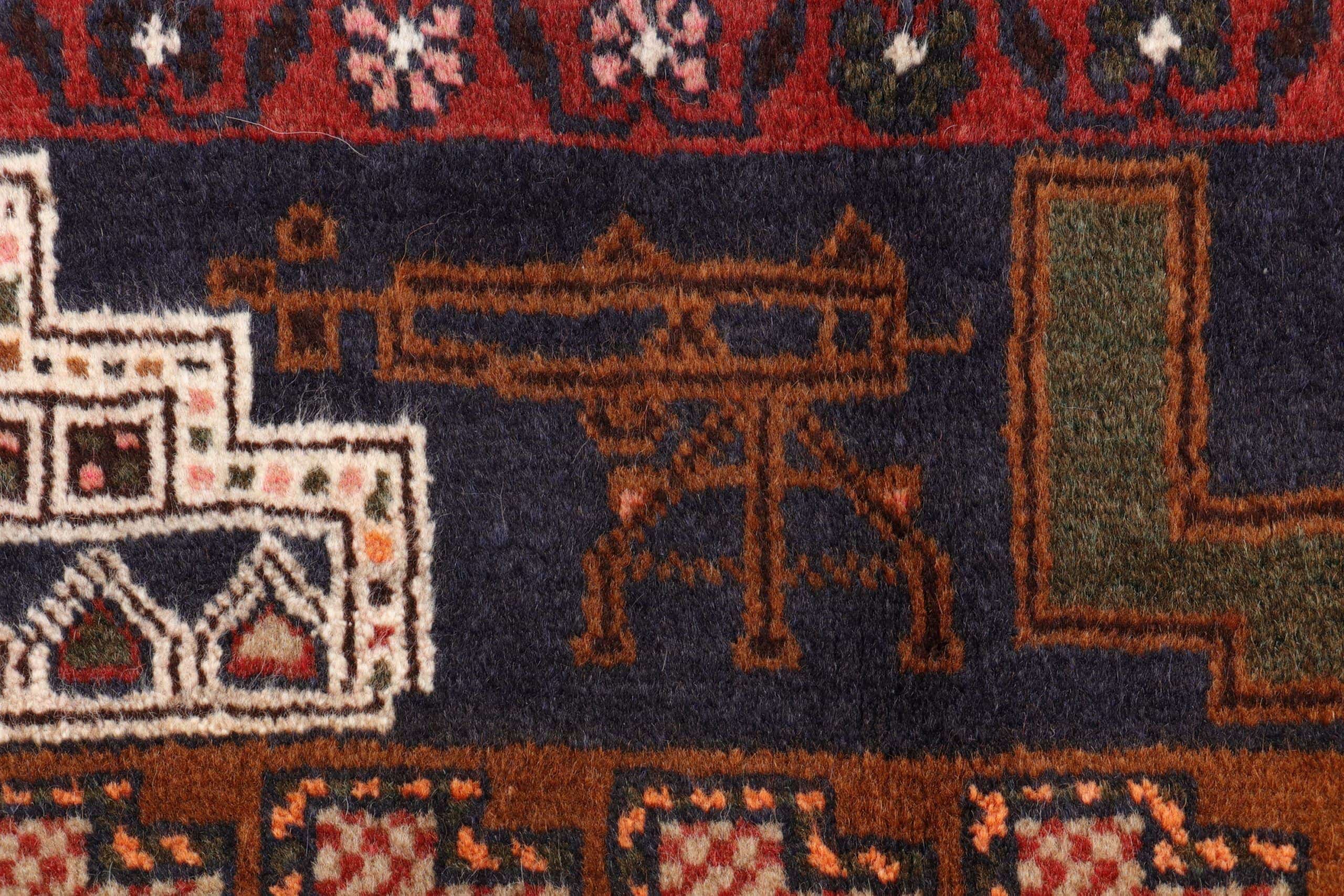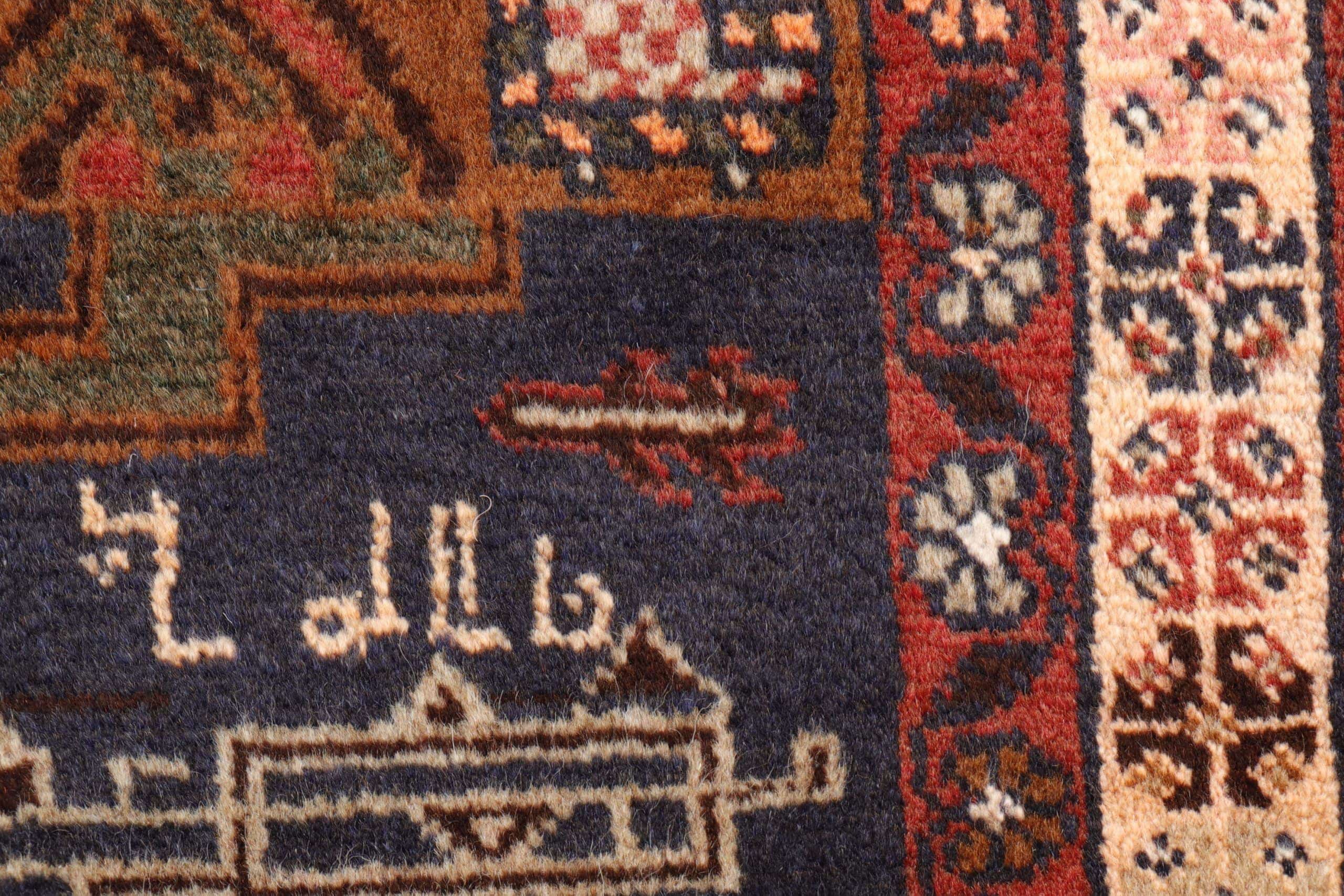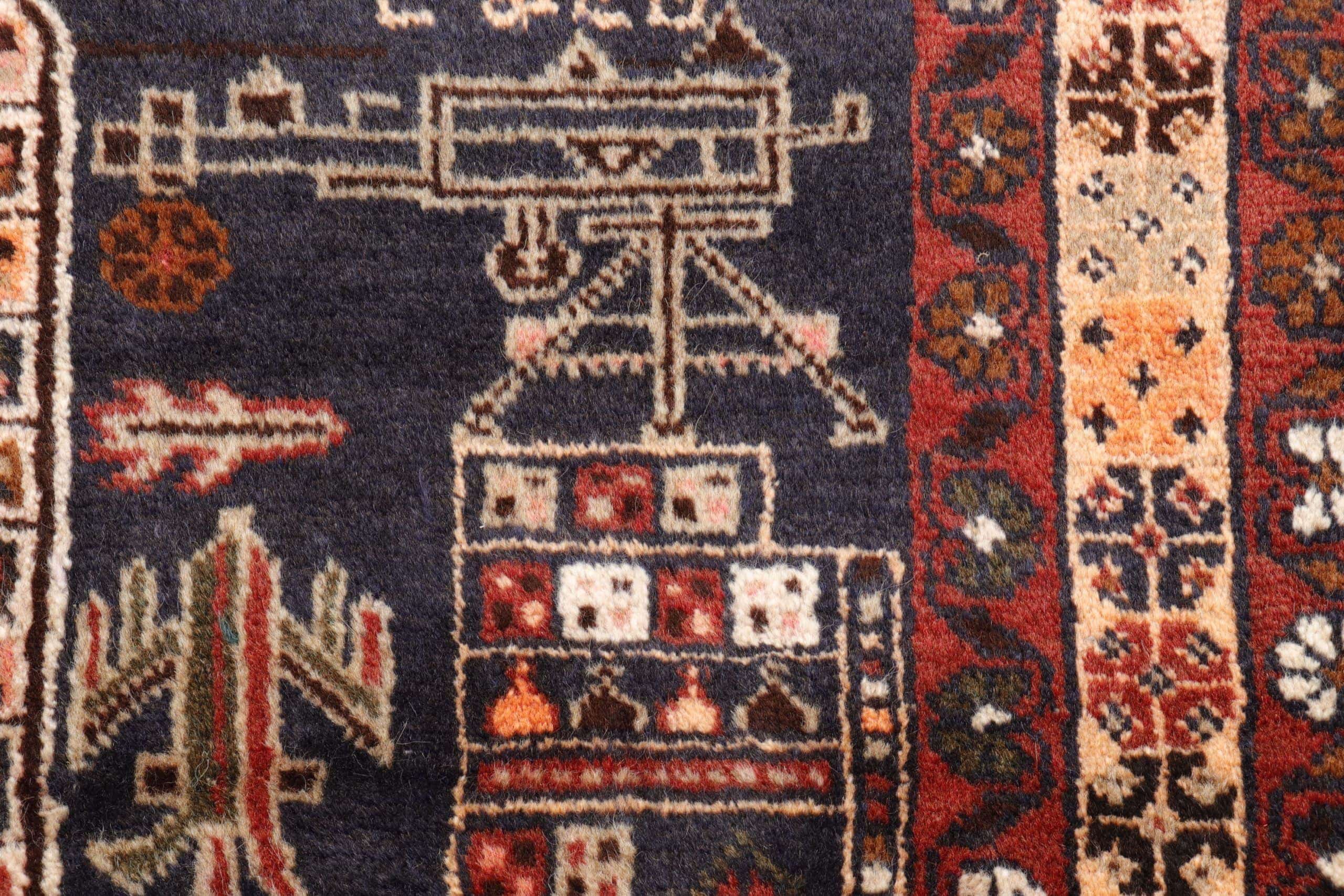595.00 €
Baluch War Rug from Herat, Afghanistan — Featuring the Iconic Malan Bridge
This beautiful Baluch war rug, woven by a woman of the Baluch tribe in the Herat region of Afghanistan, is crafted from exceptionally soft and lustrous wool. The design combines both modern and traditional motifs — including cars, helicopters, airplanes, and machine guns alongside plants, flowers, and nomadic tents (yurts).
The rug contains several inscriptions that offer fascinating insight into its origin. One reads “Maydani Herat” (Herat Airport), and beneath the helicopter appears the name of the weaver. At the top, the inscription “Poli Mallan” refers to the historic Malan Bridge — an arched, two-lane bridge crossing the Hari River in Herat Province.
Built around 1110 AD, the Malan Bridge is composed of 22 arches and has withstood countless floods that destroyed other crossings of the Hari. Today, it remains a symbol of resilience and heritage in Herat — a place where locals gather, songs are sung, and visitors can walk across its ancient stones, overlooking the river and surrounding landscape.
Due to its deep cultural meaning, the Malan Bridge is among the most frequently depicted architectural landmarks in Afghan war rugs — a timeless motif that connects the artistry of weaving with the enduring spirit of Herat.
Material: 100% hand-spun sheep wool
Size: 150×86 cms
Origin: Baluch tribe, Afghanistan
Date of weaving: Dated in the Persian calendar 1372 (=1995)
The war rug (Pashto: فرش جنگی farš jangi) tradition of Afghanistan has its origins in the decade of Soviet occupation of Afghanistan from 1979 and has continued through the subsequent military, political and social conflicts. Afghan rug-makers began incorporating the apparatus of war into their designs almost immediately after the Soviet Union invaded their country. They continue to do so today in the wake of the United States’ 2001 invasion of Afghanistan which ousted the Taliban government of Mullah Omar but has failed to bring an end to violence in the country. The rugs produced in response to these events are among the world’s richest traditions of war art of the late 20th and early 21st centuries.
The terms Baluch and war rug are generalisations given to the genre by rug dealers, commercial galleries, collectors, critics, and commentators. The distinctive characteristic of these rugs is their capacity to convey their makers’ experiences and interpretations of the circumstances and politics of war and conflict in the region.
Out of stock
Additional information
| Weight | 3.5 kg |
|---|
Subscribe and receive the lastest news
